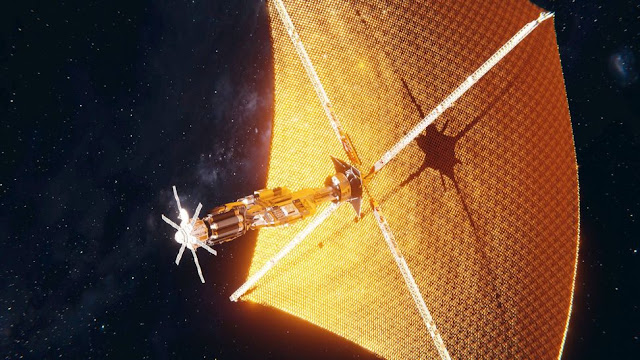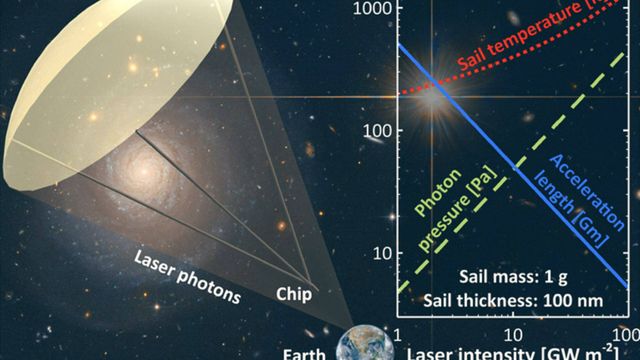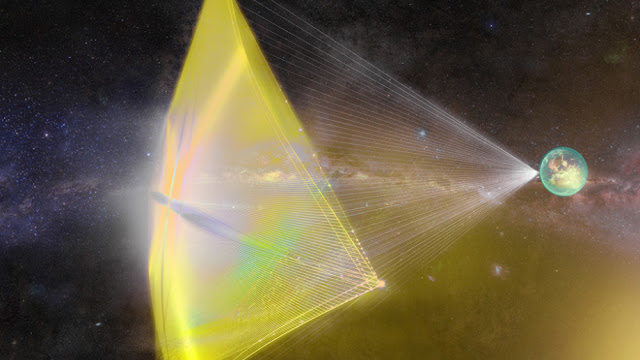
Scientists working on the Starshot Project say they have found the basic parts needed to make a ship that can travel to another solar system in our lifetimes.
Researchers from the Breakthrough Starshot Initiative have found a way to build a spaceship that can travel at one-fifth the speed of light and reach Alpha Centauri in just 20 years. This makes it possible for people to travel to another star system for the first time in history.

Because of this discovery, many of us who are reading these words right now could see how people get to another solar system before we die. The goal of this initiative is to make it possible for people to explore a star in a reasonable amount of time, instead of taking thousands of years like it would take with current engines and the help of the gravity of the planets in our solar system.
How does it work
To do this, Starshot must be able to travel between stars at speeds close to the speed of light. That is, at a speed that is not too far off from the speed of light. And you can’t do it with the technology we have now, not with ion engines or theoretical “warp drives.”
The goal of Starshot is to travel at one-fifth that speed using an array of lasers at a ground station to power a three-meter-diameter solar sail that is only a few microns thick. This sail would pull microscopic sensors to Alpha Centauri, the star system closest to Earth, which is “only” 4.37 light-years away. At a fifth of the speed of light, the Starshot spaceship would get to its destination in about 20 years. Once it got there, its signal would take just under four and a half years to reach our planet.

The project — well-known among the former director of the legendary NASA Ames Research Center Pete Worden, the director of the Institute for Theory and Computing at the Harvard-Smithsonian Center for Astrophysics Avi Loeb, and several luminaries from CalTech and other North American universities— is progressing well but it is only now that they have found the solution to make this technique work. A team of researchers from the initiative — led by Igor Bargatin, from the University of Pennsylvania — has just published the results of their research in two papers published in the scientific journal Nano Letters. The two studies solve two fundamental problems.
The Two Fundamental Problems
The first study describes what shape these solar sails actually have to be. Contrary to the ideas that we had until recently, the sails would not be flat but quite the opposite. They should be puffed out like the sails of a sailboat in order to prevent them from breaking, with a curve as deep as their width. Only then, says the study, could it resist the hyper-acceleration to which it will be subjected. According to another of the study’s authors — Matthew Campbell of the University of Pennsylvania — “laser photons will fill the sail just like air fills a beach ball.”

Bargatin says that no one had thought of this idea before, but simulations show that it might work. Bargatin says, “The idea of a light solar sail has been around for a while, but we just figured out how to make sure that this design will last the trip.” He goes on to say that the idea is that a flat, tight sail would break just like a sail on a ship.
“It’s not too hard to understand, but we had to do a lot of math to show how these materials would really act at this size.” The second key is for the heat from the laser beams to get rid of itself, which will push the sail and speed up the ship. The sheets of aluminum oxide and molybdenum disulfide that will make up the sails would not be able to handle the energy buildup caused by the lasers alone.
According to Dr. Aaswath Raman, a researcher at the University of California, Los Angeles and co-author of the study, “if candles absorb even a small fraction of the incident laser light, they will heat up to very high temperatures.”
The answer lies in a technology called “nanotechnology.” By using nanoscopic texture etching to increase the sail’s effective surface area, it will be possible to cool the sail effectively. This will make it possible for the sail to travel at relativistic speeds without being torn to pieces. After these discoveries, we can only hope that the prototypes will be ready soon and that a project like this will be in space in less than five years.





